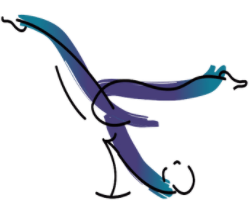There is an epidemic of upper body pain. Are you feeling it?
Do you ever feel like your upper body is screaming for help? Perhaps it's the constant slouching over electronic devices or the daily stress that we all face. Whatever the reason, upper body pain has become an epidemic in our modern society. But the good news is, there is a solution - Pilates. Yes, that's right, Pilates can be the answer to your upper body pain woes. In this blog post, we will dive deep into the world of Pilates and how it can help alleviate your upper body pain.
Picture this, you're sitting at your desk, typing away on your computer, and suddenly you feel a sharp pain in your neck. Or maybe it's your shoulders that ache, or your back that feels tight and sore. Sound familiar? If so, you're not alone. Millions of people around the world suffer from upper body pain, and it's not just limited to office workers. It can affect anyone who spends a significant amount of time sitting, standing or performing repetitive movements.
So, what can we do about it? First, let's take a closer look at the causes of upper body pain. As mentioned earlier, electronic devices and constant slouching are two major culprits. When we spend hours hunched over our phones or laptops, our posture suffers, and our muscles become tight and strained. Stress is another significant factor that can contribute to upper body pain. When we're stressed, our muscles tense up, and we hold that tension in our upper body.
This is where Pilates comes in. Pilates is a form of exercise that focuses on improving posture, increasing flexibility and strengthening the core. It is a low-impact workout that can be tailored to suit anyone, regardless of their fitness level or age. Pilates works by targeting the deep muscles of the core, which support the spine and improve posture. This, in turn, helps to alleviate upper body pain by reducing strain on the muscles and joints.
One of the key principles of Pilates is to engage the entire body in every movement. This means that when you perform a Pilates exercise, you're not just working one muscle group, but multiple muscle groups at the same time. For example, when you do a Pilates pushup, you're not only working your chest and triceps but also your core, glutes and legs. This full-body approach helps to distribute the workload evenly and reduces the strain on any one muscle group.
Another benefit of Pilates is that it is a low-impact workout. This means that it's gentle on the joints and less likely to cause injury than high-impact exercises like running or jumping. For people who suffer from upper body pain, this is particularly important. High-impact exercises can put a lot of strain on the joints and exacerbate existing pain. Pilates, on the other hand, is a safe and effective way to improve strength and flexibility without causing further damage.
So, how can Pilates specifically help with upper body pain? Let's take a look at a few key areas:
Neck pain: Neck pain is a common complaint among office workers and anyone who spends a lot of time looking down at electronic devices. Pilates exercises that focus on the neck and upper back can help to release tension and alleviate pain. For example, the neck roll is a simple Pilates exercise that involves rolling the head in a circular motion to release tension in the neck and upper back.
Shoulder pain: Shoulder pain is often caused by poor posture and weak upper back muscles. Pilates exercises that focus on the upper back and shoulders can help to improve posture and strengthen the muscles. The shoulder bridge is a great Pilates exercise for strengthening the upper back and shoulders.
Back pain: Back pain is a common complaint among people of all

